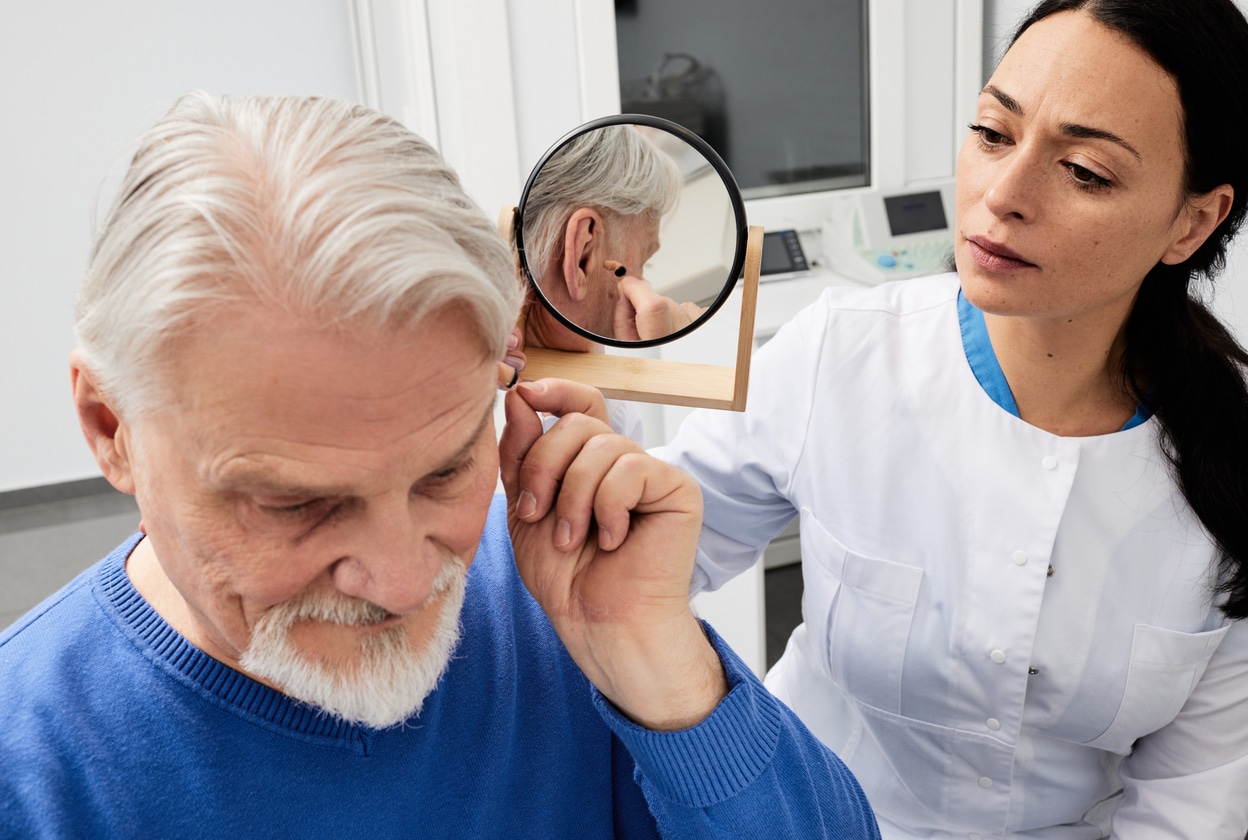Hearing aids offer tailored solutions for addressing hearing loss, with various styles catering to diverse needs and preferences. Each style presents distinct advantages, ensuring individuals find the perfect fit for their lifestyle. Nearly 28.8 million Americans could benefit from the use of hearing aids, so understanding their functionality can help you choose the best option. Let’s explore the benefits of three common styles, along with essential considerations for each.
Behind-the-Ear (BTE) Hearing Aids

Behind-the-ear hearing aids hook over the top of the ear and rest behind it. They feature a tube with a custom ear mold that fits into the ear canal.
- Versatility: BTE hearing aids accommodate a wide range of hearing loss levels, making them suitable for various individuals, from mild to profound hearing loss.
- Comfortable design: The behind-the-ear placement ensures a comfortable fit, with a small tube or wire directing sound into the ear canal.
- Durability: BTE hearing aids are resilient to moisture and earwax, ensuring longevity and reliability.
Many BTE models include advanced technologies such as noise reduction and wireless connectivity, enhancing the listening experience in diverse environments. However, due to their size, they are quite visible, especially for those with short hair. Proper fitting and adjustment are necessary to prevent discomfort and irritation.
In-the-Ear (ITE) Hearing Aids
In-the-ear hearing aids are suitable for people with mild to severe hearing loss and are effective in noisy environments. They often include volume controls and other customizable options.
- Discreetness: ITE hearing aids are custom molded to fit snugly in the ear, offering a discreet and nearly invisible option.
- Ease of use: With no external components or tubes, ITE hearing aids are user-friendly and easy to handle, ideal for individuals with dexterity concerns.
- Natural sound: The placement of ITE hearing aids in the outer ear preserves natural sound transmission, ensuring a more authentic auditory experience.
Proper fit and adjustment are essential to prevent feedback. Accurate ear canal impressions are crucial for a good fit.
In-the-Canal (ITC) Hearing Aids
In-the-canal hearing aids fit partly in the ear canal and can improve mild to moderate hearing loss in adults. They are easy to remove, making them a great choice for active individuals, such as those who enjoy running in Town Common:
- Cosmetic appeal: The way ITC hearing aids are worn provides cosmetic appeal.
- Comfort: The snug fit of ITC hearing aids provides comfort during extended wear, minimizing feedback and discomfort.
- Improved sound quality: Placing the microphone closer to the eardrum enhances sound quality and reduces background noise, improving speech understanding.
Proper ear canal hygiene is essential to prevent irritation or infection, and regular check-ups are recommended to optimize performance.
Selecting the right style of hearing aid involves considering the specific benefits and advisories associated with each option. By understanding these nuances and working closely with a hearing specialist, individuals can make informed decisions to enhance their hearing and improve their overall quality of life. To learn more about additional hearing aid options and how to promote healthy hearing, contact Massachusetts Hearing Group to schedule an appointment.